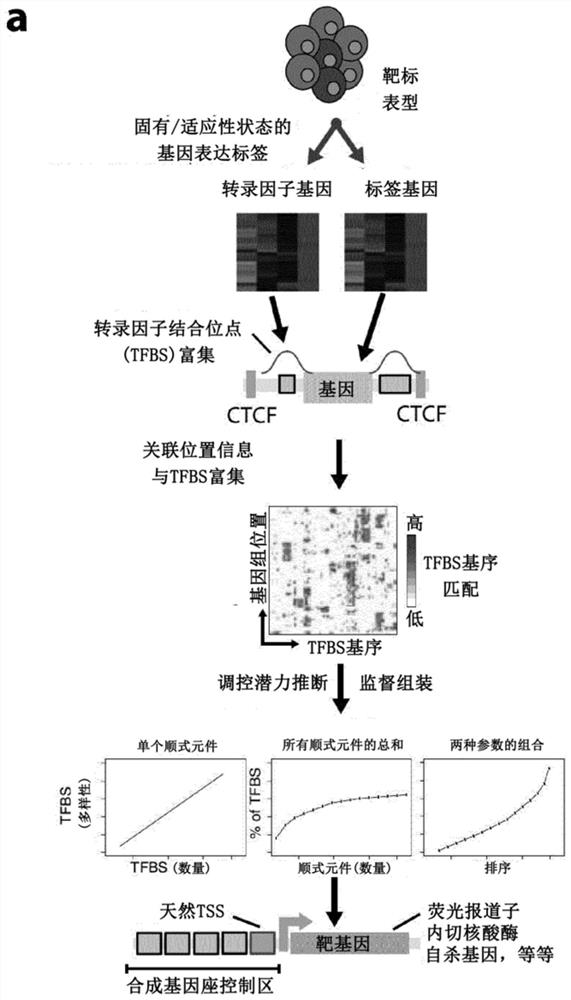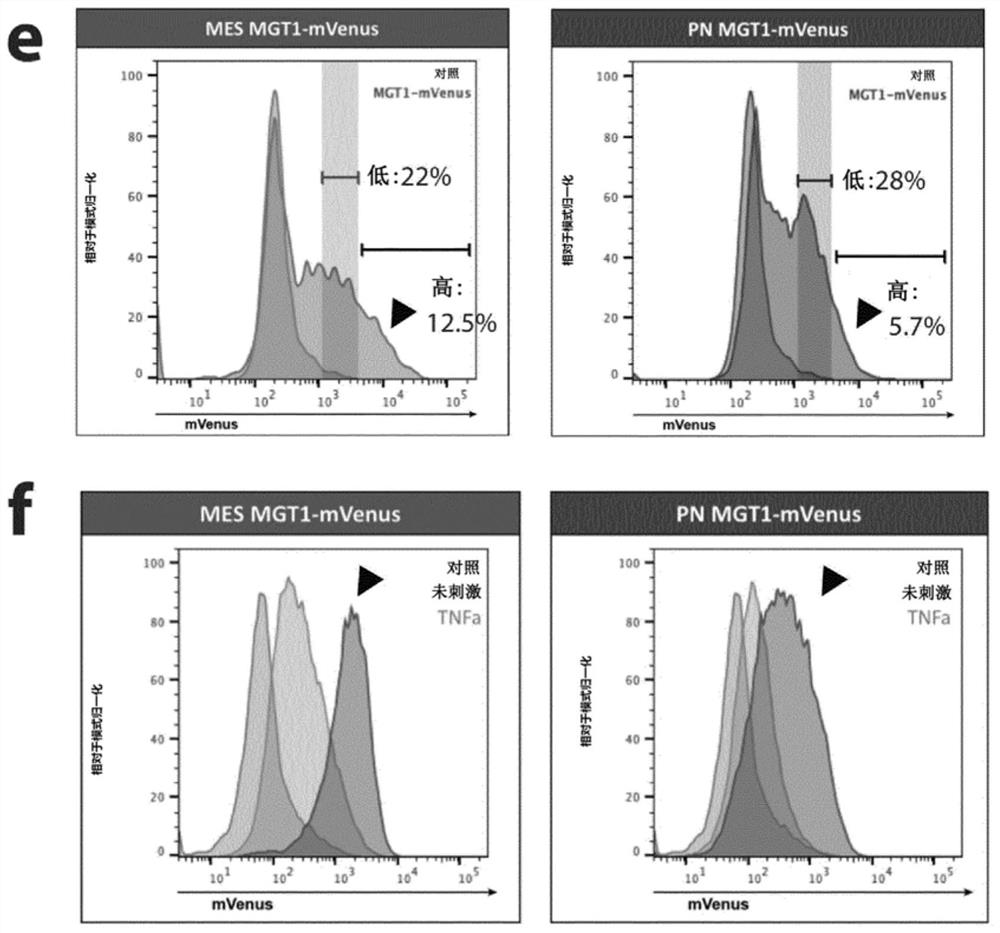A method for engineering synthetic cis-regulatory DNA
A purposeful and integrated technology, applied in the field of reporting carriers, can solve problems such as limitations
- Summary
- Abstract
- Description
- Claims
- Application Information
AI Technical Summary
Problems solved by technology
Method used
Image
Examples
Embodiment 1
[0347] Example 1: Design of an expression cassette comprising a subtype-specific synthetic locus control region (sLCR) of glioblastoma multiforme (GBM) tumor cells.
[0348] A high degree of cellular and molecular heterogeneity is thought to contribute to resistance to standard therapy in solid tumors, and this poses a barrier to the development of targeted approaches. Glioblastoma multiforme (GBM), the most common primary adult brain tumor, is unusually heterogeneous and resistant to therapy 13 . GBM is also one of the cancers with the highest degree of genomic and epigenomic characterization 14-16 . GBM tumors were recurrently classified into three subtypes based on the transcriptome, with mesenchymal and proneural more frequently cross-validated 52、53、54 . Several studies have debated the correlation between subtype-specific gene expression signatures and differential response to treatment and overall survival of patients. This suggests that GBM subtype identification ...
Embodiment 2
[0355] Example 2: Genetic tracking of mesenchymal fate in human glioma-initiating cells using lentiviral vectors including MGT#1 as sLCR
[0356] A typical lentiviral vector carrying an sLCR such as MGT#1 drives the expression of a fluorescent reporter subtype of mVenus or mCherry. To facilitate genetic tracing in vivo, drive mVenus to the plasma membrane (via Igk leader and platelet-derived growth factor receptor (PDGFR) transmembrane sequence tagging; figure 1 c) and shuttle mCherry to the nucleus via NLS. To enable fluorescence visualization and sorting of sLCRs independently of reporter expression, we also included a second cassette expressing the H2B-CFP fusion via the ubiquitous PGK promoter ( figure 1 c).
[0357] As a prototype test, we generated lentiviral particles in HEK293T cells with MGT#1-mVenus sLCR and used the viral particles to infect human glioma-initiating cells with the MES genotype (MES-hGIC). Membrane mVenus expression was observed both in transient...
Embodiment 3
[0360] Example 3: Use of MGT#1 and MGT#2 sLCR as readout for studying intrinsic and adaptive responses in GIC
[0361] Under the same experimental conditions, a second independent reporter (MGT#2) showed consistent results ( figure 2 a), which supports our ability to generate functional sLCRs starting from gene expression profiles. Interestingly, both MGT#1 and MGT#2 reporters indicated that FBS was able to induce mesenchymal differentiation, unlike the case of TNFα, which was accompanied by GIC differentiation as measured by visual inspection and flow cytometry (data not shown show). This finding can be explained only in part by the presence of TGFB1, which is indeed a known component of FBS. Indeed, TGFB1 is a mesenchymal inducer, but does not strongly induce MGT#1, and it does not promote differentiation when used as a purified cytokine in the same time frame ( figure 2 a). Perhaps more interestingly, this observation on FBS is highly consistent with the TCGA report t...
PUM
 Login to View More
Login to View More Abstract
Description
Claims
Application Information
 Login to View More
Login to View More - R&D Engineer
- R&D Manager
- IP Professional
- Industry Leading Data Capabilities
- Powerful AI technology
- Patent DNA Extraction
Browse by: Latest US Patents, China's latest patents, Technical Efficacy Thesaurus, Application Domain, Technology Topic, Popular Technical Reports.
© 2024 PatSnap. All rights reserved.Legal|Privacy policy|Modern Slavery Act Transparency Statement|Sitemap|About US| Contact US: help@patsnap.com










